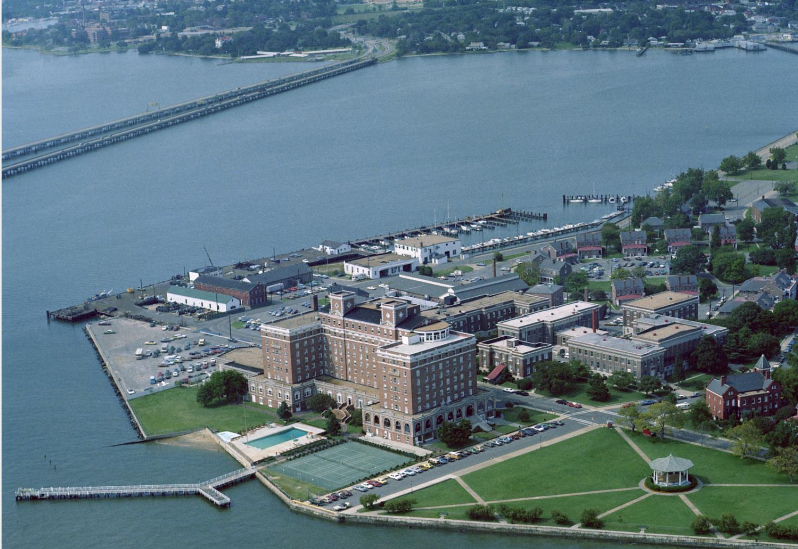
this version of The Chamberlin hotel has been a landmark at Point Comfort since 1928, with Hampton Roads Bridge-Tunnel in background
Source: National Archives, An aerial view of the Chamberlin Hotel (1982)

this version of The Chamberlin hotel has been a landmark at Point Comfort since 1928, with Hampton Roads Bridge-Tunnel in background
Source: National Archives, An aerial view of the Chamberlin Hotel (1982)
Starting in 1822, even before Fort Monroe was completed, a hotel has operated at Point Comfort. The first Hygeia Hotel was built in 1822, originally to provide housing for the workers constructing Fort Monroe. Engineers and officers stayed there as well until housing was available on the new base.
The Hygeia Hotel, built in a Greek Revival style, expanded to over 200 rooms. Wings were added to accommodate the tourists who decided the breezes, beaches, and view at Point Comfort provided a good summer vacation spot.
Customers included presidents Andrew Jackson and John Tyler. There were 5,000 guests in 1859, and that number doubled in 1860 when the hotel owners arranged for a visit by the unusually large Great Eastern ship. Arranging spectacles and events to fill hotel rooms in Hampton Roads is not a new concept.
The US Secretary of War ordered the hotel to be torn down in 1862, even though the co-owners were loyal to the Union. Eliminating the Hygeia Hotel minimized non-military visitors to Fort Monroe, including potential Southern spies. Removal also improved the upstream field of fire, towards the James River shipping channel.1
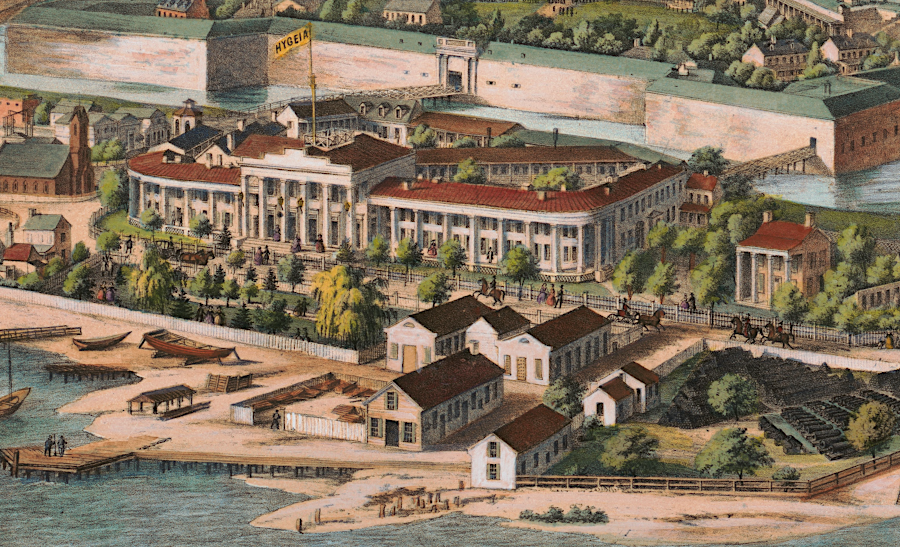
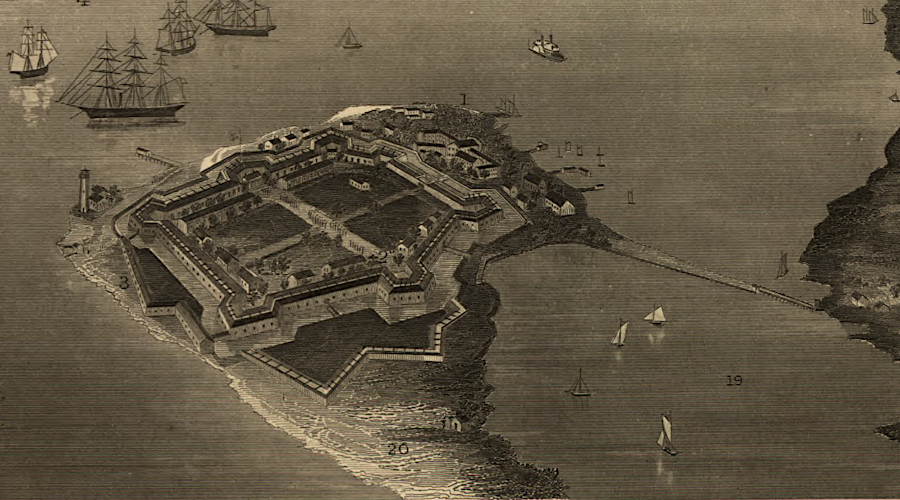
the first Hygeia Hotel, located between the moat around Fort Monroe and the James River shipping channel, was removed in 1862
Source: Library of Congress, Fortress Monroe, Old Point Comfort, & Hygeia Hotel, Va.; US Geological Survey, Fortress Monroe, Va. and its vicinity (by Jacob Wells, c.1862) a
The second Hygeia Hotel was a four-story structure built after the Civil War ended. The manager after 1874, Harrison Phoebus, made the hotel a destination vacation spot.
Phoebus added elevators, electricity, a 9,000 square-foot dining room, and even therapeutic baths in the days before there were theme parks such as DisneyWorld. "The Great Southern Resort" complex, including support structures, extended 700 yards along the waterfront and could accommodate 1,000 guests.2
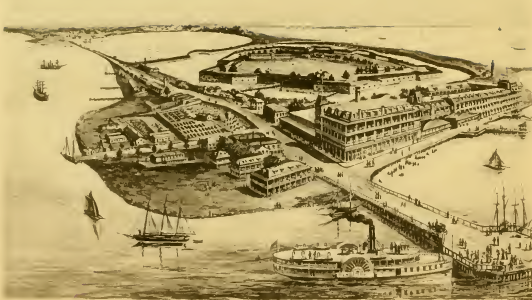
the complex of structures associated with the second Hygeia Hotel sprawled along the waterfront
Source: Internet Archive, Souvenir of Old Point Comfort and environs (1889)
Starting in the 1820's, steamboats landed at the wharves next to the hotel. Tourism increased after the Chesapeake and Ohio (C&O) Railroad built its line Newport News in 1882. Vacation traffic rather than military requirements triggered construction of a railroad spur from Newport News to make Point Comfort the eastern terminus of the Chesapeake and Ohio (C&O) Railroad.
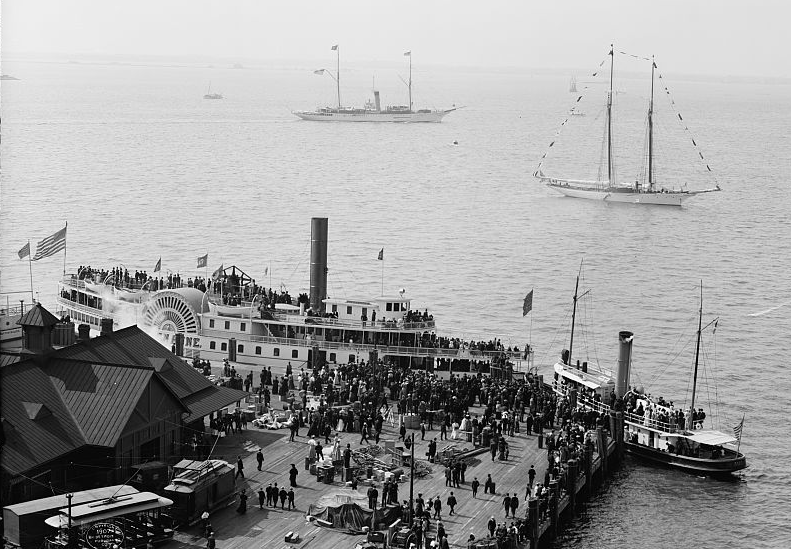
steamboats brought customers to hotels at Old Point Comfort
Source: Library of Congress, The Mayflower at Old Point Comfort, VA (c.1907)
Tourism increased after the Chesapeake and Ohio (C&O) Railroad built its line Newport News in 1882. Vacation traffic rather than military requirements triggered construction of a railroad spur from Newport News to make Point Comfort the eastern terminus of the Chesapeake and Ohio (C&O) Railroad.
The Hampton Branch was built from Newport News to connect with a new station in Hampton in 1882. The station was named after Harrison Phoebus, who made the Hygeia Hotel a national attraction. The town incorporated in 1900 was also named Phoebus, until it merged into the city of Hampton and lost its identity as a town in 1952.
The C&O built a trestle across the creek in 1890 to service tourists going to Old Point Comfort. Passenger rail traffic declined after the highway construction boom of the 1950's, and the spur line was abandoned in 1960.3
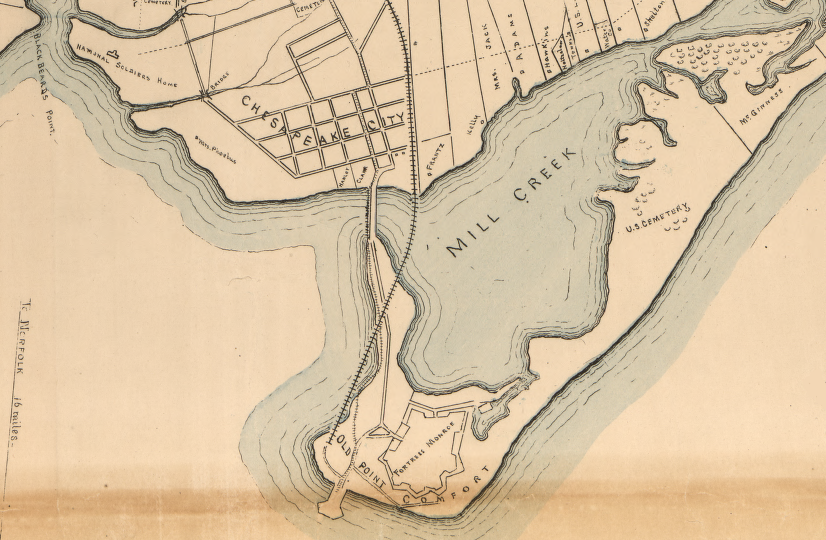
the Chesapeake and Ohio Railroad crossed Mill Creek on a trestle to reach the Hygeia Hotel
Source: Library of Congress, Map of Elizabeth City County, Virginia (c.1892)
In 1902, after the Spanish-American War, the Federal government planned an expansion of Fort Monroe. The US Army revoked permission for the second Hygeia Hotel to use the land, and what may have been the most expensive building complex in America at one time was torn down.
Its destruction on military orders matched the end of the first Hygeia Hotel 40 years earlier. In 1862 the removal of the first Hygeia Hotel was intended to provide a clear space for cannons to fire on Confederate ships, or ships of any European country that might ally with the Confederacy.
The removal of the second Hygeia Hotel was required to allow for new construction at Fort Monroe. The US Navy had seized Spanish bases at Havana and Manila during the Spanish-American War in 1898. Strengthening at Fort Monroe would reduce the risk that any enemy could threaten Hampton Roads in a future war. The expansion plans were never implemented, so the site of the old hotel ended up as waterfront parkland.
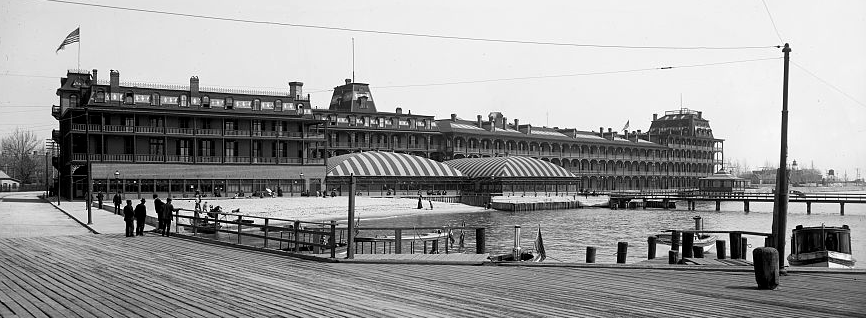
the second Hygeia Hotel was torn down in 1902 to allow for a planned (but never implemented) expansion of Fort Monroe
Source: Library of Congress, Hygeia Hotel, Old Point Comfort, VA (1902)
The large number of officers and military personnel traveling to Fort Monroe, and the development of Old Point Comfort as a destination for tourists, drew competition for the Hygeia Hotel. The US Army had authorized the Hygeia Hotel to use Federally-owned land between 1822-1902, but had not given it a monopoly. Land leases were also provided for other hotels.
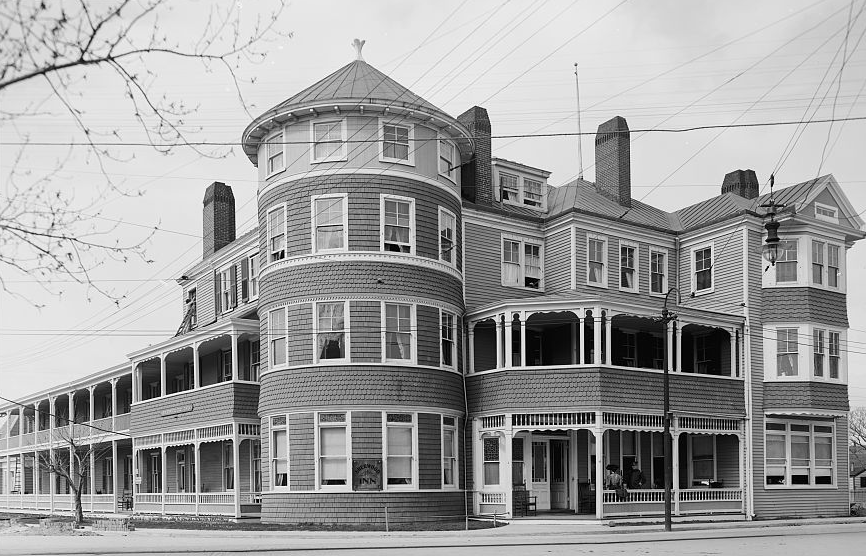
competition for the Hygeia Hotel at Old Point Comfort included the Sherwood Inn
Source: Library of Congress, Sherwood Inn [i.e. Hotel], Old Point Comfort, VA (c.1905)
The Chamberlin became the main competition on the waterfront for the Hygeia Hotel. The first building known as The Chamberlin was built in 1896 after the US Army issued a 50-year lease. The original six-story structure, which housed guests who came to the 1907 Jamestown Exposition at Sewall's Point, burned in 1920.

the US Army required removal of the Hygeia Hotel in 1902, but allowed The Chamberlin to continue at Old Point Comfort
Source: Library of Congress, Hotel Chamberlin, Old Point Comfort, VA (c.1905)
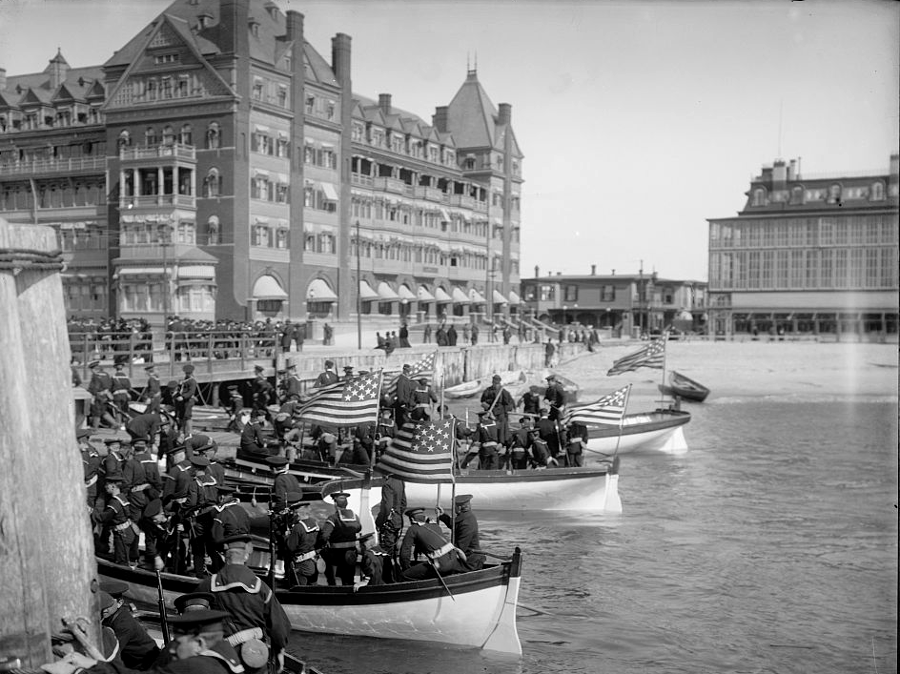
the US Army issued land leases for the Chamberlin (on the left) and the Hygeia Hotel (on the right)
Source: Library of Congress, A Landing party at Hampton Roads
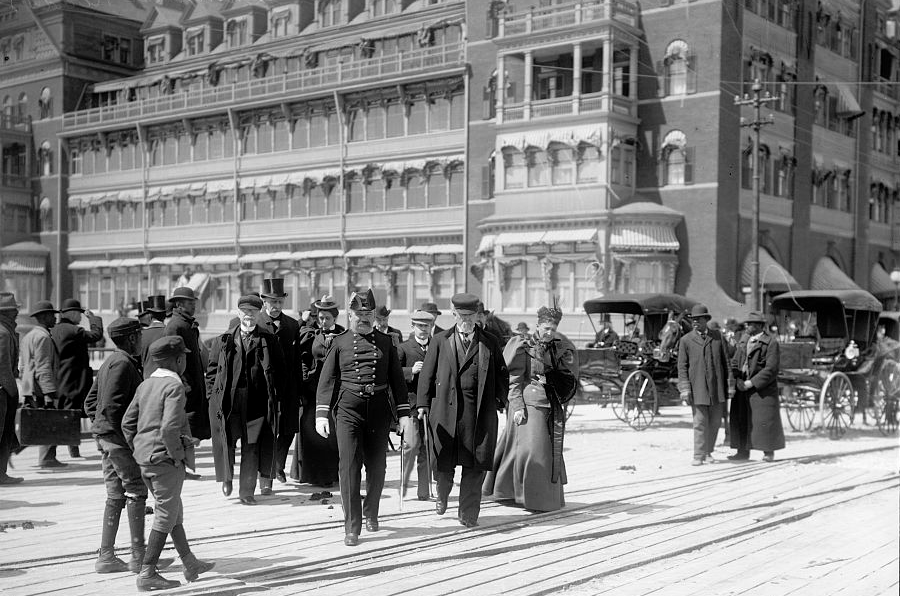
visitors to the first Chamberlin Hotel relied upon horse-drawn carriages to travel locally
Source: Library of Congress, Going to the landing stage, Hampton Roads
The Chamberlin's second building opened in 1928, and is still a nine-story landmark on Point Comfort. The lease for a private organization to use the Federally-owned land at Old Point Comfort was renewed in 1966 and again in 2002.4
The Chamberlin closed after the 9/11 terrorist attacks resulted in greater security at Fort Monroe, limiting public access. After the Base Realignment and Closure (BRAC) decision in 2005 to close Fort Monroe as a military installation, The Chamberlin was rehabilitated and reopened in 2008 as a retirement home for "waterfront senior living."5
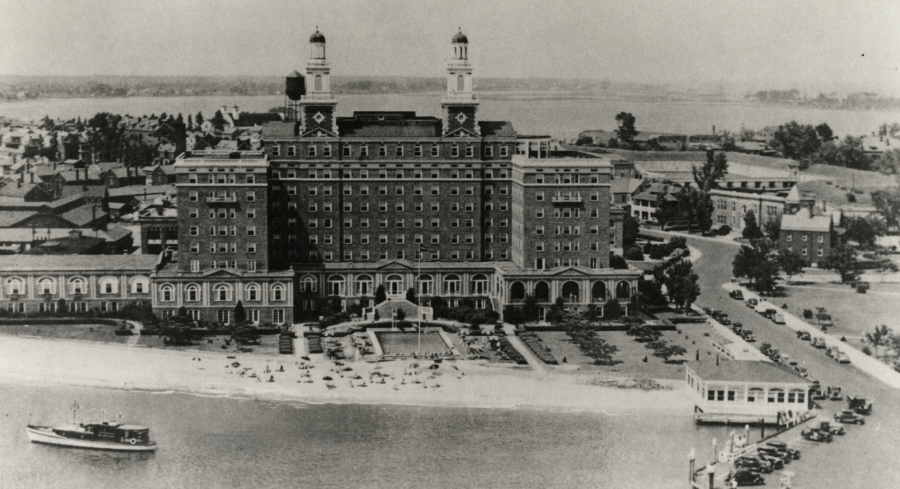
the second version of the Chamberlin Hotel, shown here during the 1930's, was converted into a retirement home after the 2001 terror attacks triggered increased security on military bases
Source: Fort Monroe Online Heritage Project, 2nd Chamberlin ca 1930s casemate museum
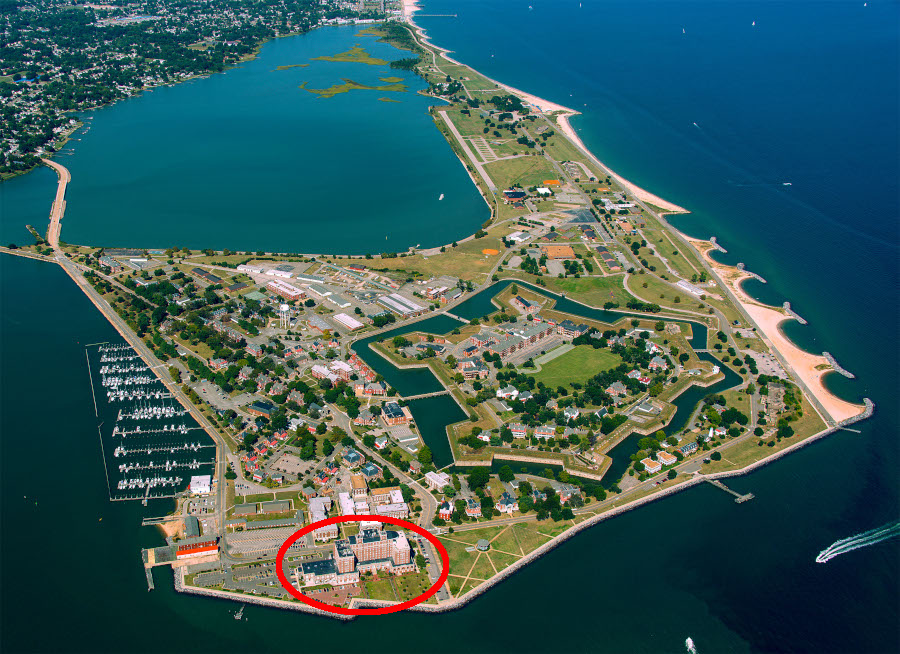
today The Chamberlin is a retirement home, no longer a hotel for transient visitors
Source: National Park Service, Aerial View of Fort Monroe
Plans for a new 90-bed boutique hotel were announced in 2021. The Fort Monroe Authority has requested private companies submit proposals for adaptive reuse. The authority chose a submission that included $40 million in private investment for a hotel, conference center, and restaurant as well as redevelopment of the 300-slip marina adjacent to the Chamberlin.6
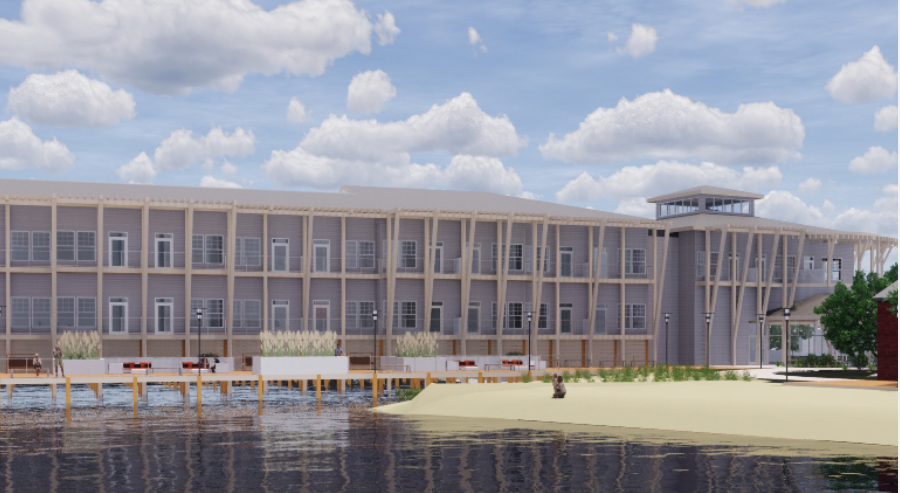
the new 90-room hotel, built over the water, was designed to provide waterfront views from every room
Source: Pack Brothers Hospitality, 37° North
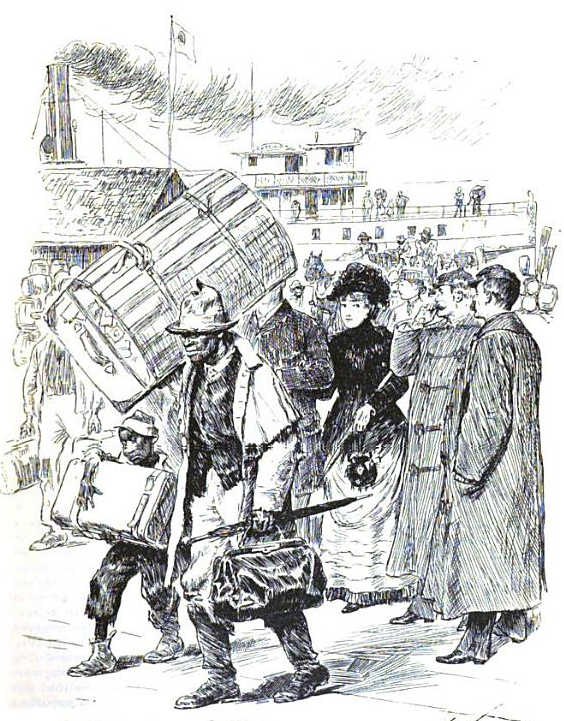
in the 1800's, tourists arrived by steamboat at Point Comfort
Source: Harper's New Monthly Magazine, Arrival at Fortress Monroe (p.661)
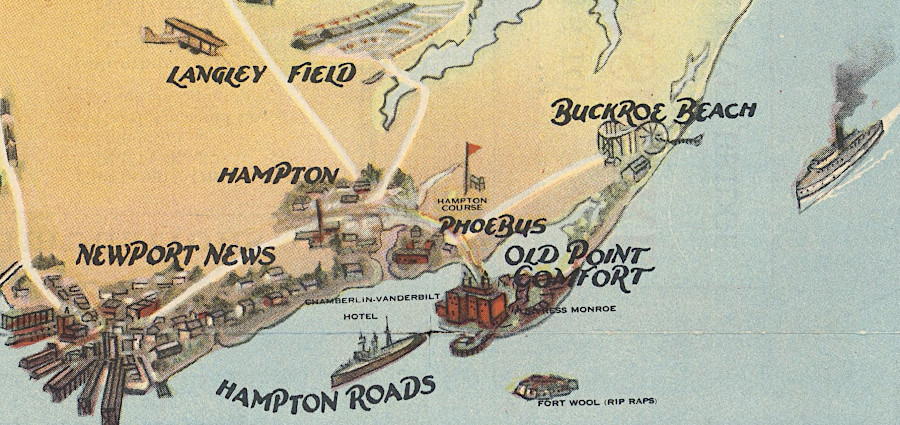
tip of the Peninsula, 1930
Source: David Rumsey Historical Map Collection, Virginia seashore: a year round playground among historic shrines (James River Bridge Corporation, 1930)
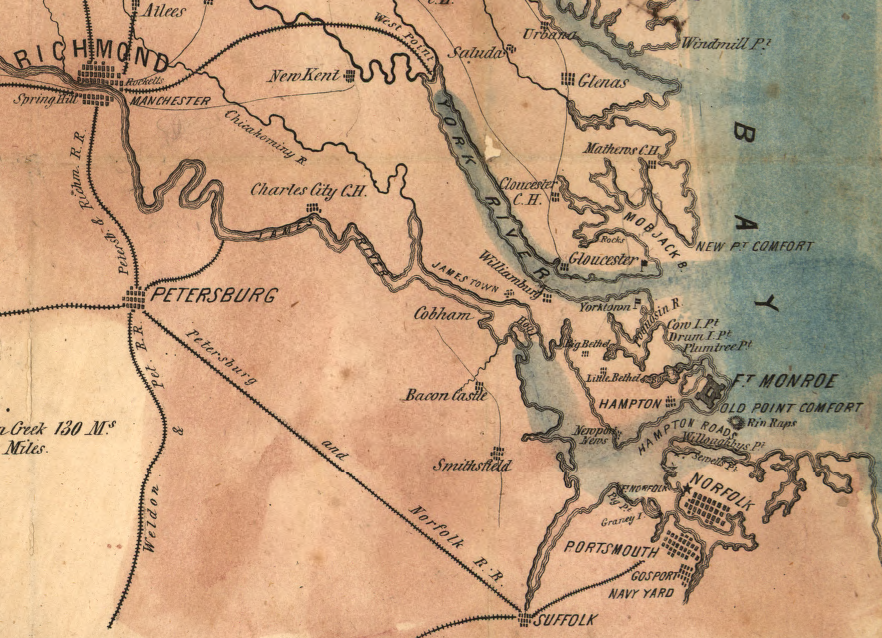
prior to construction of the Chesapeake and Ohio Railroad to Newport News and then Point Comfort after the Civil War, there was no railroad on the Peninsula
Source: Library of Congress, Map of Virginia, Maryland &c., seat of war, compiled from the latest maps, 1861
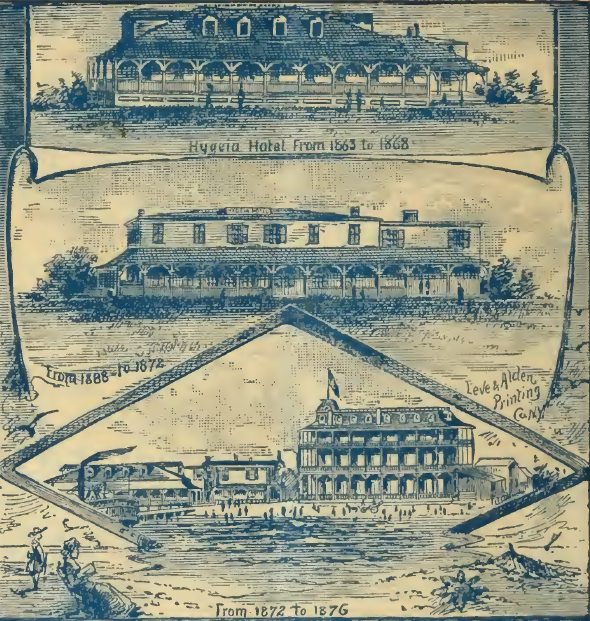
the Hygeia Hotel was expanded/modified multiple times, starting with the first version in 1863
Source: Hygeia Hotel
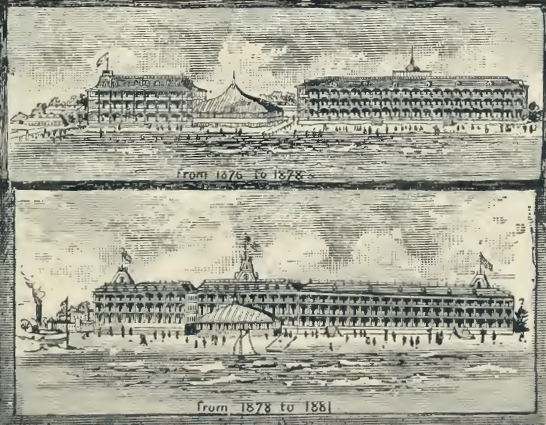
Hygeia Hotel between 1876-1881
Source: Hygeia Hotel
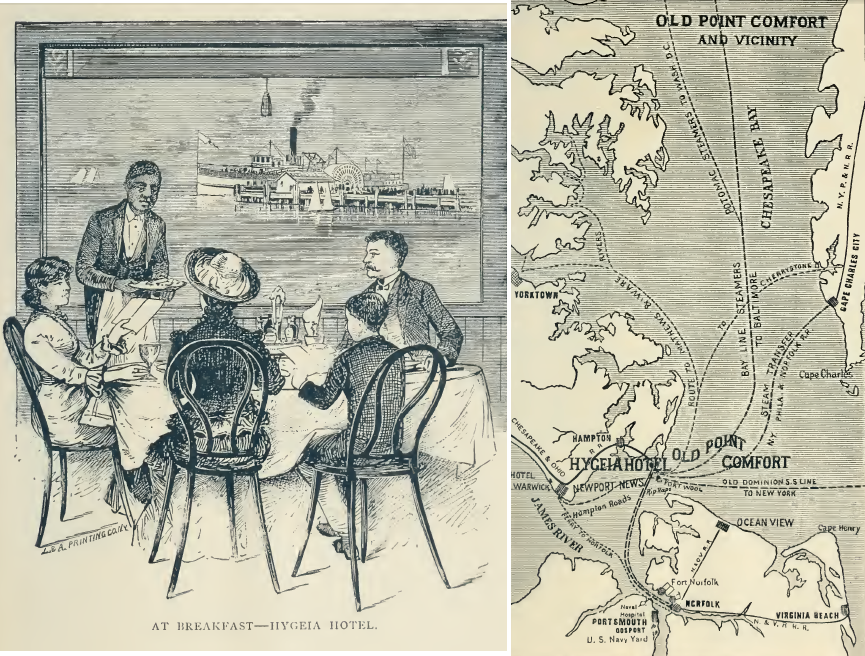
the Hygeia Hotel had steamboat access to many locations on the Chesapeake Bay
Source: Hygeia Hotel
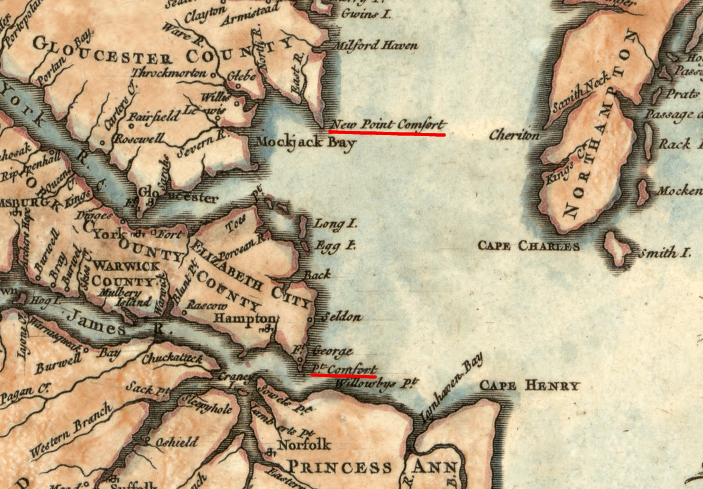
Old Point Comfort became a resort as well as the site of a lighthouse and Fort Monroe, while plans for resort development at New Point Comfort ended after storms washed away much of the peninsula (but the lighthouse at New Point Comfort survived)
Source: Library of Congress, Carte de la Virginie et du Maryland
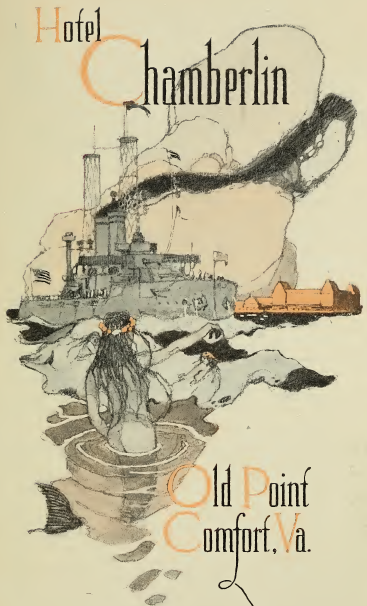
the Chamberlin Hotel highlighted the US Navy in a 1912 advertisement
Source: Internet Archive, Hotel Chamberlin, Old Point Comfort, Va.
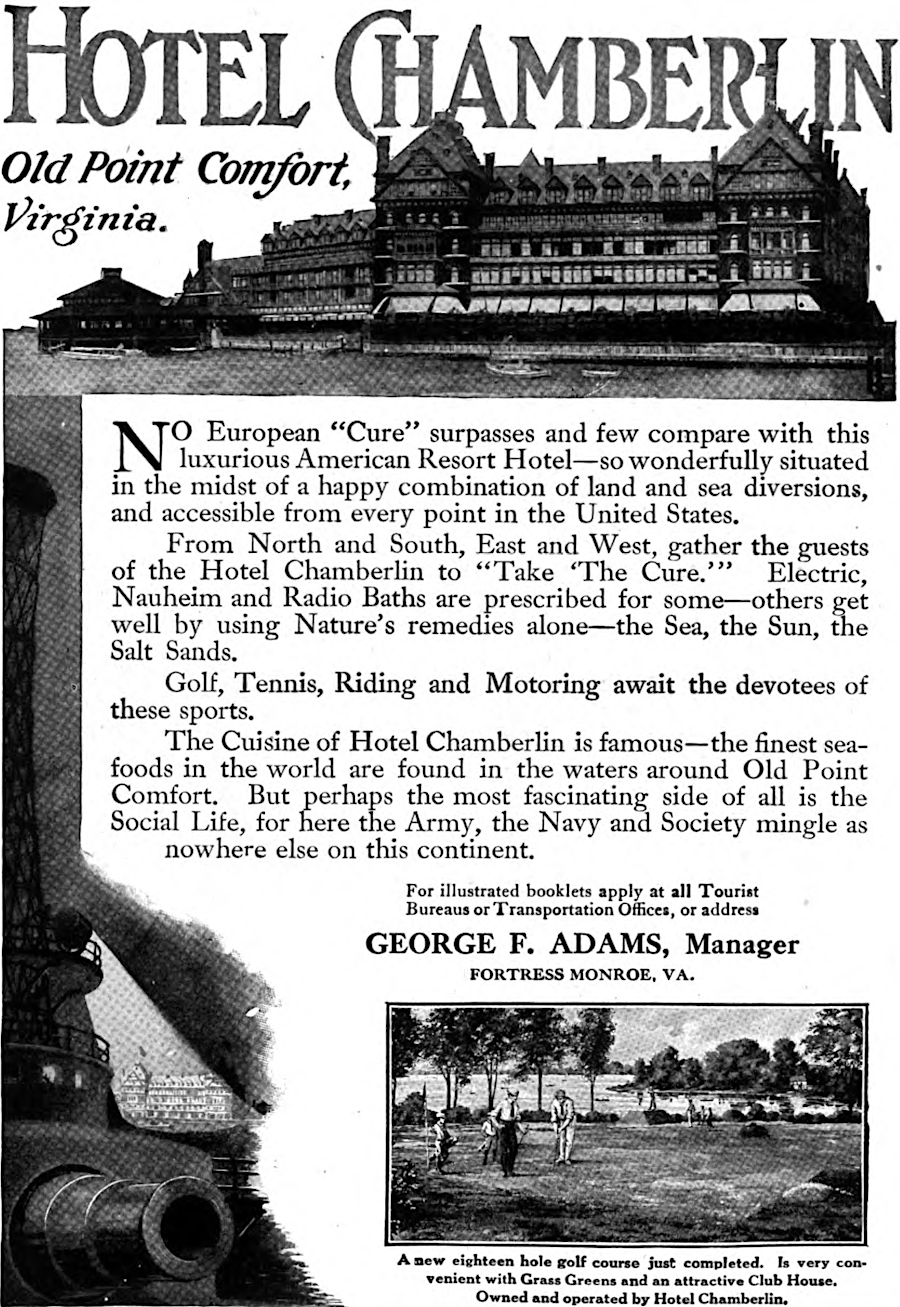
The Chamberlin advertised its connections to the military just before the United States entered World War I
Source: The Countryside Magazine and Suburban Life (December 1916, p.305)